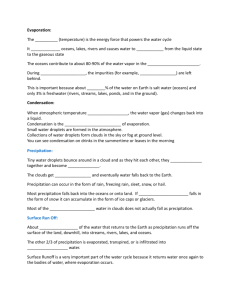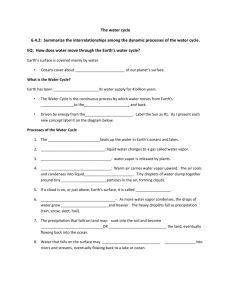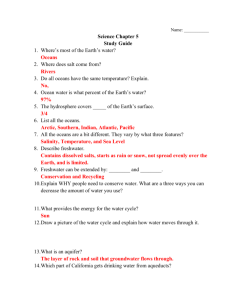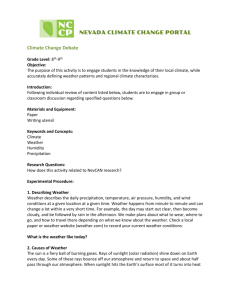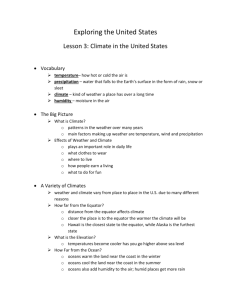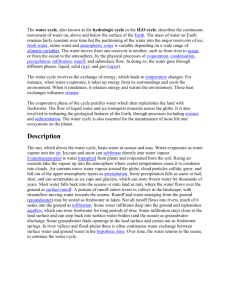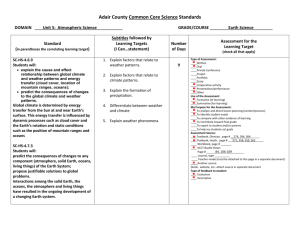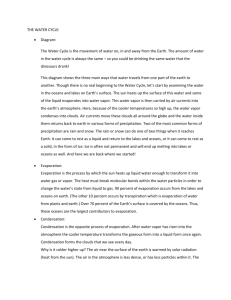Practice Problem Key
advertisement
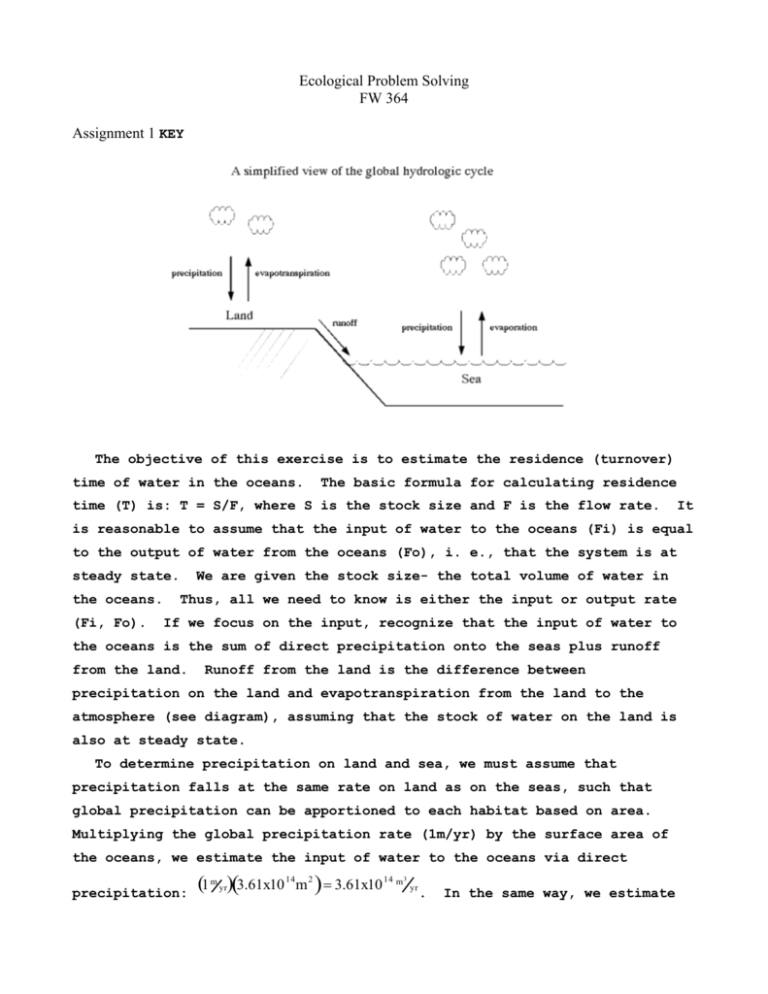
Ecological Problem Solving FW 364 Assignment 1 KEY The objective of this exercise is to estimate the residence (turnover) time of water in the oceans. The basic formula for calculating residence time (T) is: T = S/F, where S is the stock size and F is the flow rate. It is reasonable to assume that the input of water to the oceans (Fi) is equal to the output of water from the oceans (Fo), i. e., that the system is at steady state. the oceans. (Fi, Fo). We are given the stock size- the total volume of water in Thus, all we need to know is either the input or output rate If we focus on the input, recognize that the input of water to the oceans is the sum of direct precipitation onto the seas plus runoff from the land. Runoff from the land is the difference between precipitation on the land and evapotranspiration from the land to the atmosphere (see diagram), assuming that the stock of water on the land is also at steady state. To determine precipitation on land and sea, we must assume that precipitation falls at the same rate on land as on the seas, such that global precipitation can be apportioned to each habitat based on area. Multiplying the global precipitation rate (1m/yr) by the surface area of the oceans, we estimate the input of water to the oceans via direct precipitation: 1 m yr3.61x10 14m 2 3.61x10 14 m 3 yr . In the same way, we estimate 1 m yr1.49x10 14m 2 1.49x10 14 m precipitation input to the land as: 3 yr . To determine runoff from land to the oceans, evapotranspiration from land is subtracted from precipitation on land: 1.49x10 After summing the inputs, 3.61x10 14 m3 yr 8.70x10 14 m3 13 m3 yr yr 6.20x10 4.48x10 13 m3 14 m3 yr yr 8.70x10 13 m3 yr . , we can calculate the residence time of water in the oceans: 1.35x10 18 m3 4.48x10 14 m 3 3013yr yr . Given the uncertainties of this analysis (including untested assumptions), we should probably round off the answer to 3000yr. An alternative approach to solving the problem is to focus on the output rate from the oceans (evaporation). In this case, the solution requires recognizing that total global precipitation must balance total global evaporation, i. e., that the atmospheric stock of water is in steady state. In this case, evaporation from the ocean can be calculated as: total global precipitation minus evapotranspiration from the land: 14 m3 5.1x10 yr 6.2x10 13 m3 14 m3 using 4.48x10 yr yr 4.48x10 14 m3 yr . Residence time can then be calculated as the total output from the oceans.

